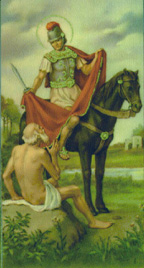We ask you, humbly: don't scroll away.
Hi readers, it seems you use Catholic Online a lot; that's great! It's a little awkward to ask, but we need your help. If you have already donated, we sincerely thank you. We're not salespeople, but we depend on donations averaging $14.76 and fewer than 1% of readers give. If you donate just $5.00, the price of your coffee, Catholic Online School could keep thriving. Thank you.Help Now >
Roman Catechism
FREE Catholic Classes
This catechism differs from other summaries of Christian doctrine for the instruction of the people in two points: it is primarily intended for priests having care of souls ( ad parochos ), and it enjoys an authority equalled by no other catechism. The need of a popular authoritative manual arose from a lack of systematic knowledge among pre-Reformation clergy and the concomitant neglect of religious instruction among the faithful.
The Reformers had not been slow in taking advantage of the situation; their popular tracts and catechisms were flooding every country and leading thousands of souls away from the Church. The Fathers of Trent, therefore, "wishing to apply a salutary remedy to this great and pernicious evil, and thinking that the definition of the principal Catholic doctrines was not enough for the purpose, resolved also to publish a formulary and method for teaching the rudiments of the faith, to be used by all legitimate pastors and teachers" (Cat. praef., vii). This resolution was taken in the eighteenth session (26 February, 1562) on the suggestion of St. Charles Borromeo ; who was then giving full scope to his zeal for the reformation of the clergy. Pius IV entrusted the composition of the Catechism to four distinguished theologians : Archbishops Leonardo Marino of Lanciano and Muzio Calini of Zara, Egidio Foscarini, Bishop of Modena, and Francisco Fureiro, a Portuguese Dominican. Three cardinals were appointed to supervise the work. St. Charles Borromeo superintended the redaction of the original Italian text, which, thanks to his exertions, was finished in 1564. Cardinal William Sirletus then gave it the final touches, and the famous Humanists, Julius Pogianus and Paulus Manutius, translated it into classical Latin. It was then published in Latin and Italian as "Catechismus ex decreto Concilii Tridentini ad parochos Pii V jussu editus, Romae, 1566" (in-folio). Translations into the vernacular of every nation were ordered by the Council (Sess. XXIV, "De Ref.", c. vii).
The Council intended the projected Catechism to be the Church's official manual of popular instruction. The seventh canon, "De Reformatione", of Sess. XXIV, runs: "That the faithful may approach the Sacraments with greater reverence and devotion, the Holy Synod charges all the bishops about to administer them to explain their operation and use in a way adapted to the understanding of the people; to see, moreover, that their parish priests observe the same rule piously and prudently, making use for their explanations, where necessary and convenient, of the vernacular tongue; and conforming to the form to be prescribed by the Holy Synod in its instructions ( catechesis ) for the several Sacraments : the bishops shall have these instructions carefully translated into the vulgar tongue and explained by all parish priests to their flocks . . .". In the mind of the Church the Catechism, though primarily written for the parish priests, was also intended to give a fixed and stable scheme of instruction to the faithful, especially with regard to the means of grace, so much neglected at the time. To attain this object the work closely follows the dogmatic definitions of the council. It is divided in four parts:
I. The Apostles' Creed ;II. The Sacraments ;
III. The Decalogue ;
IV. Prayer, especially The Lord's Prayer.
It deals with the papal primacy and with Limbo, points which were not discussed or defined at Trent ; on the other hand, it is silent on the doctrine of Indulgences, which is set forth in the "Decretum de indulgentiis", Sess. XXV. The bishops urged in every way the use of the new Catechism; they enjoined its frequent reading, so that all its contents would be committed to memory ; they exhorted the priests to discuss parts of it at their meetings, and insisted upon its being used for instructing the people.
To some editions of the Roman Catechism is prefixed a "Praxis Catechismi", i.e. a division of its contents into sermons for every Sunday of the year adapted to the Gospel of the day. There is no better sermonary. The people like to hear the voice of the Church speaking with no uncertain sound; the many Biblical texts and illustrations go straight to their hearts, and, best of all, they remember these simple sermons better than they do the oratory of famous pulpit orators. The Catechism has not of course the authority of conciliary definitions or other primary symbols of faith ; for, although decreed by the Council, it was only published a year after the Fathers had dispersed, and it consequently lacks a formal conciliary approbation. During the heated controversies de auxiliis gratiae between the Thomists and Molinists, the Jesuits refused to accept the authority of the Catechism as decisive. Yet it possesses high authority as an exposition of Catholic doctrine. It was composed by order of a council, issued and approved by the pope ; its use has been prescribed by numerous synods throughout the whole Church ; Leo XIII, in a letter to the French bishops (8 Sept., 1899), recommended the study of the Roman Catechism to all seminarians, and the reigning pontiff, Pius X, has signified his desire that preachers should expound it to the faithful.
The earliest editions of the Roman Catechism are: "Romae apud Paulum Manutium", 1566; "Venetiis, apud Dominicum de Farrisö, 1567; "Coloniae", 1567 (by Henricus Aquensis); "Parisuis, in aedibus. Jac. Kerver", 1568; "Venetiis, apud Aldum", 1575; Ingolstadt, 1577 (Sartorius). In 1596 appeared at Antwerp "Cat. Romanus . . . quaestionibus distinctus, brevibusque exhortatiunculis studio Andreae Fabricii, Leodiensis". (This editor, A. Le Fevre, died in 1581. He probably made this division of the Roman Catechism into questions and answers in 1570). George Eder, in 1569, arranged the Catechism for the use of schools. He distributed the main doctrines into sections and subsections, and added perspicuous tables of contents. This useful work bears the title: "Methodus Catechismi Catholici". The first known English translation is by Jeremy Donovan, a professor at Maynooth, published by Richard Coyne, Capel Street, Dublin, and by Keating & Brown, London, and printed for the translator by W. Folds & Son, Great Shand Street, 1829. An American edition appeared in the same year. Donovan's translation was reprinted at Rome by the Propaganda Press, in two volumes (1839); it is dedicated to Cardinal Fransoni, and signed: "Jeremias Donovan, sacerdos hibernus, cubicularius Gregorii XVI, P. M." There is another English translation by R.A. Buckley (London, 1852), which is more elegant than Donovan's and claims to be more correct but is spoiled by the doctrinal notes of the Anglican translator. The first German translation, by Paul Hoffaeus, is dated Dillingen, 1568.
Join the Movement
When you sign up below, you don't just join an email list - you're joining an entire movement for Free world class Catholic education.
-

-
Mysteries of the Rosary
-
St. Faustina Kowalska
-
Litany of the Blessed Virgin Mary
-
Saint of the Day for Wednesday, Oct 4th, 2023
-
Popular Saints
-
St. Francis of Assisi
-
Bible
-
Female / Women Saints
-
7 Morning Prayers you need to get your day started with God
-
Litany of the Blessed Virgin Mary
The Power of the Rosary: Why Praying the Rosary Matters for Catholics
-

Lasers Reveal Hidden Mayan City of Valeriana with 6,500 Structures in Mexico
-

Embracing Peace and Unity in a Time of Division
-
The 'Black Legend': Historian Argues Anti-Catholic Bias in Spanish Conquest Narratives
-
This Catholic Hero Who Fought Against Communism Should Be Released Immediately
Daily Catholic
 Daily Readings for Monday, November 11, 2024
Daily Readings for Monday, November 11, 2024 St. Martin of Tours: Saint of the Day for Monday, November 11, 2024
St. Martin of Tours: Saint of the Day for Monday, November 11, 2024 Prayer for Deceased Veterans: Prayer of the Day for Monday, November 11, 2024
Prayer for Deceased Veterans: Prayer of the Day for Monday, November 11, 2024- Daily Readings for Sunday, November 10, 2024
- St. Leo the Great: Saint of the Day for Sunday, November 10, 2024
- Evening Prayers: Prayer of the Day for Saturday, November 09, 2024
![]()
Copyright 2024 Catholic Online. All materials contained on this site, whether written, audible or visual are the exclusive property of Catholic Online and are protected under U.S. and International copyright laws, © Copyright 2024 Catholic Online. Any unauthorized use, without prior written consent of Catholic Online is strictly forbidden and prohibited.
Catholic Online is a Project of Your Catholic Voice Foundation, a Not-for-Profit Corporation. Your Catholic Voice Foundation has been granted a recognition of tax exemption under Section 501(c)(3) of the Internal Revenue Code. Federal Tax Identification Number: 81-0596847. Your gift is tax-deductible as allowed by law.







 Daily Readings for Monday, November 11, 2024
Daily Readings for Monday, November 11, 2024 St. Martin of Tours: Saint of the Day for Monday, November 11, 2024
St. Martin of Tours: Saint of the Day for Monday, November 11, 2024 Prayer for Deceased Veterans: Prayer of the Day for Monday, November 11, 2024
Prayer for Deceased Veterans: Prayer of the Day for Monday, November 11, 2024

